14 Small Texas Towns That Feel Like Stepping Back In Time
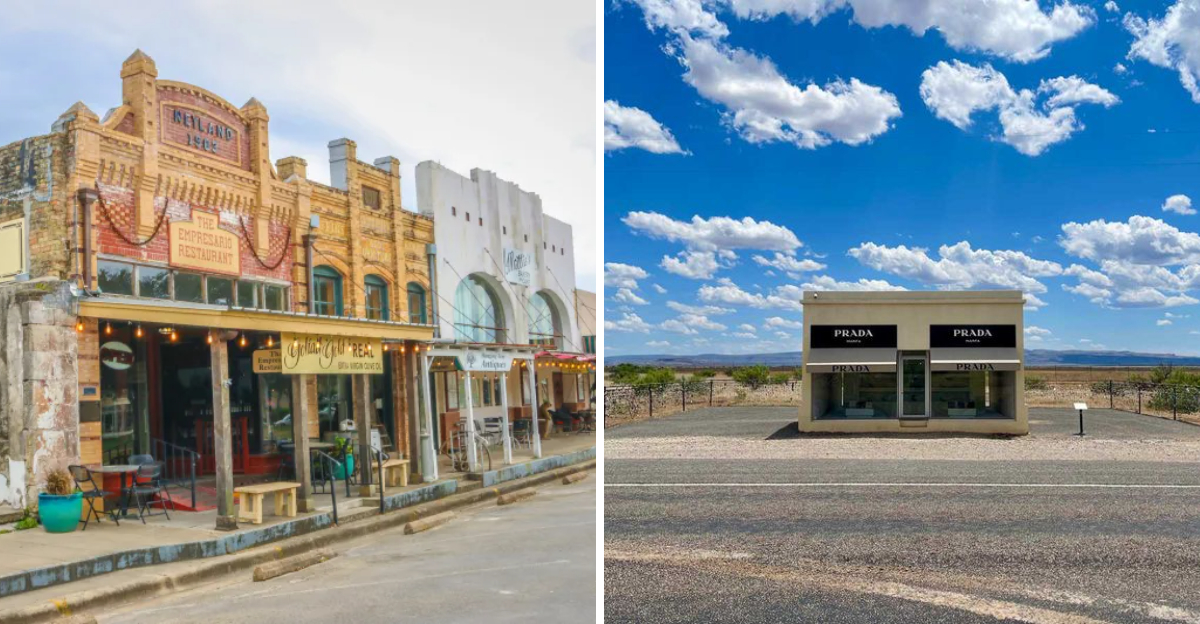
Cobblestone streets, weathered storefronts, and echoes of generations gone by still shape the rhythm of life in certain corners of the Lone Star State.
These charming little communities feel worlds away from traffic, skyscrapers, and the rush of modern living, inviting you to slow your pace and wander through eras preserved in architecture, tradition, and everyday moments.
If you’re craving a journey where history feels close enough to touch, these 14 small towns offer that rare magic, timeless character, heartfelt hospitality, and stories etched into every porch, courthouse square, and main street.
1. Gruene
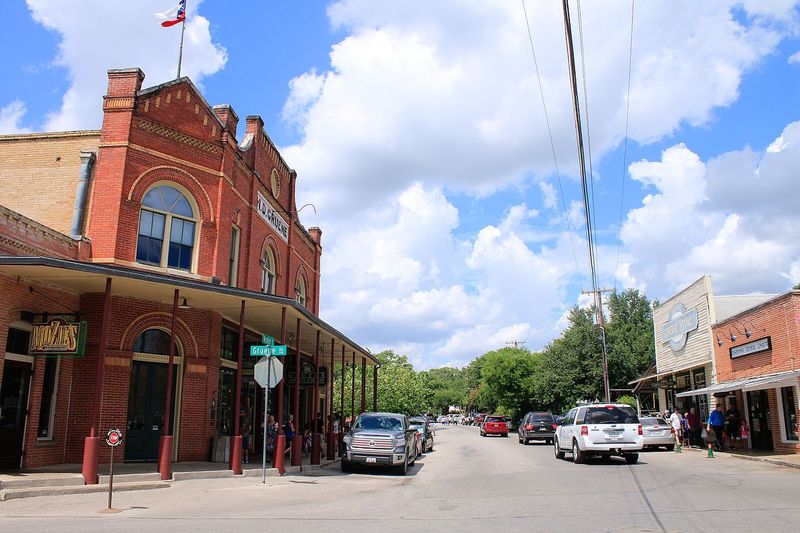
Gruene Hall still echoes with country music just like it did when it opened in 1878, making it Texas’s oldest dance hall. The entire town looks like a movie set from the Wild West, complete with wooden sidewalks and antique shops tucked into century-old buildings.
You can grab a burger at the Grist Mill restaurant, which sits in the ruins of an actual cotton gin from the 1800s. The Guadalupe River flows nearby, offering tubing adventures when you need a break from history.
This place doesn’t just preserve the past—it celebrates it with live music, local crafts, and that unmistakable small-town charm.
2. Jefferson

Once a bustling riverboat port, Jefferson became a ghost of its former glory when the railroad passed it by in the 1870s. That misfortune turned into the town’s greatest treasure because everything stayed exactly as it was.
Victorian mansions line the streets like fancy ladies at a ball, many now serving as bed-and-breakfasts where you can sleep surrounded by authentic antiques. Ghost tours are wildly popular here since the town claims more haunted buildings than you can shake a stick at.
Carriage rides clip-clop through neighborhoods where time literally stopped ticking forward over a century ago.
3. Granbury
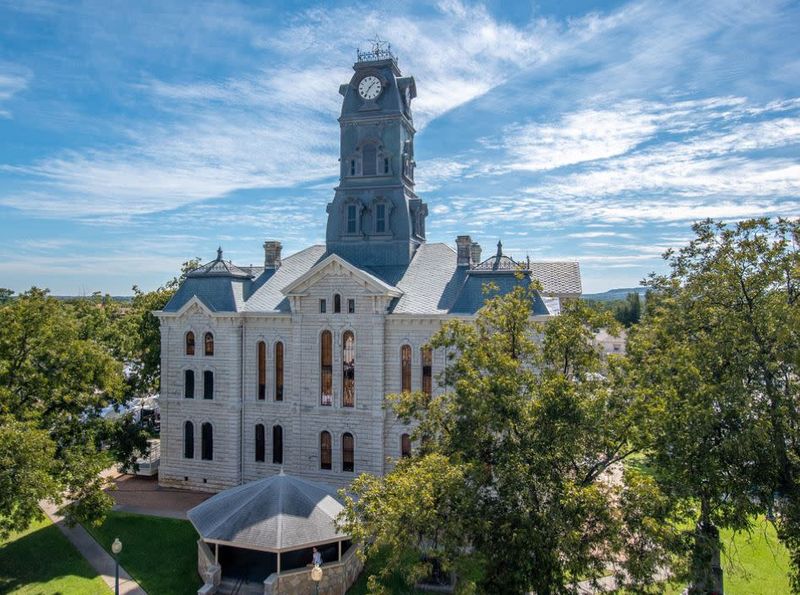
The town square wraps around a stunning limestone courthouse built in 1891 that looks like something from a postcard. Granbury’s entire downtown is on the National Register of Historic Places, which basically means it’s officially awesome and old.
Opera performances still happen at the Granbury Opera House, which opened in 1886 and hosts shows that would make your great-great-grandparents feel right at home. The town sits on Lake Granbury, so you get history mixed with water activities.
Local legend whispers that John Wilkes Booth faked his death and lived here under an assumed name, adding mystery to the nostalgia.
4. Nacogdoches
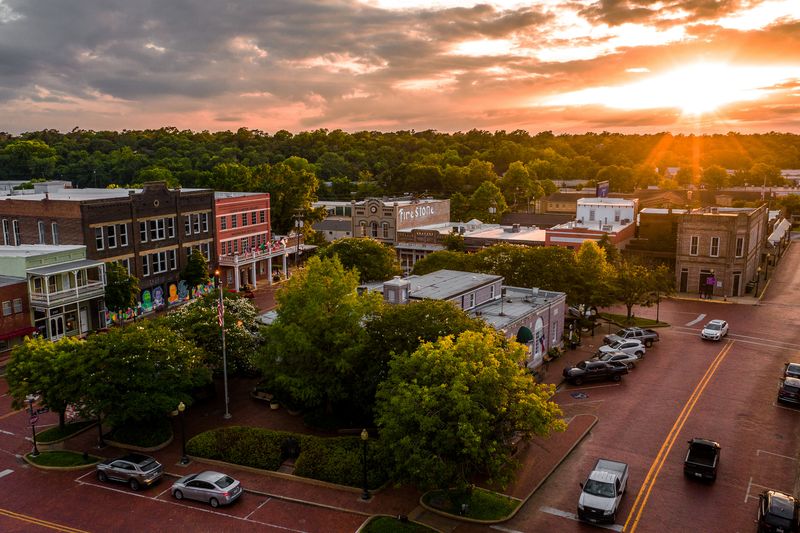
Claiming the title of Texas’s oldest town isn’t just bragging—Nacogdoches was established in 1779, before Texas was even Texas. Walking these streets means following in the footsteps of Spanish missionaries, frontier settlers, and probably a few outlaws too.
The Old Stone Fort Museum is a reconstruction of the original 1779 trading post that witnessed countless historical dramas unfold. Downtown buildings wear their age proudly with weathered brick facades and stories etched into every corner.
You’ll find azalea trails that bloom spectacularly each spring, proving that old doesn’t mean boring around here.
5. Bastrop
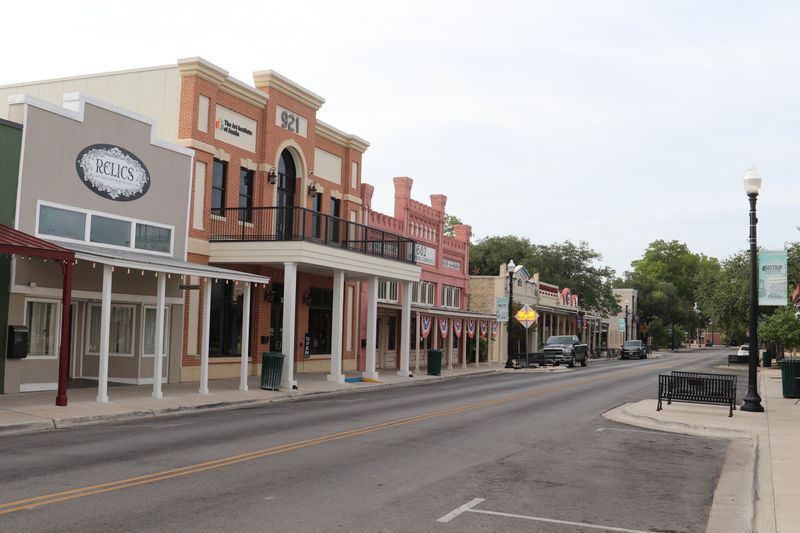
Main Street looks like someone pressed pause in the 1800s and forgot to hit play again. Bastrop’s downtown district features buildings that survived fires, floods, and the test of time with remarkable stubbornness.
The town grew up along the Colorado River, serving as an important crossing point for pioneers heading west to seek their fortunes. Today, those pioneer vibes remain strong with antique stores, mom-and-pop cafes, and architecture that refuses to modernize.
Surrounded by the Lost Pines forest, Bastrop combines natural beauty with historical authenticity in a way that feels both peaceful and profound.
6. Castroville

Step into Castroville and you might wonder if you accidentally teleported to a French village in the 1840s. Henri Castro brought Alsatian settlers here, and they built homes that look nothing like typical Texas architecture.
The Landmark Inn dates back to 1849 and still welcomes guests who want to sleep where stagecoach travelers once rested their weary bones. Stone cottages with steep roofs dot the landscape, each one telling stories in a French-German accent.
This town proves that Texas history isn’t all cowboys and cattle drives—sometimes it’s croissants and European charm preserved perfectly for modern visitors.
7. Bandera
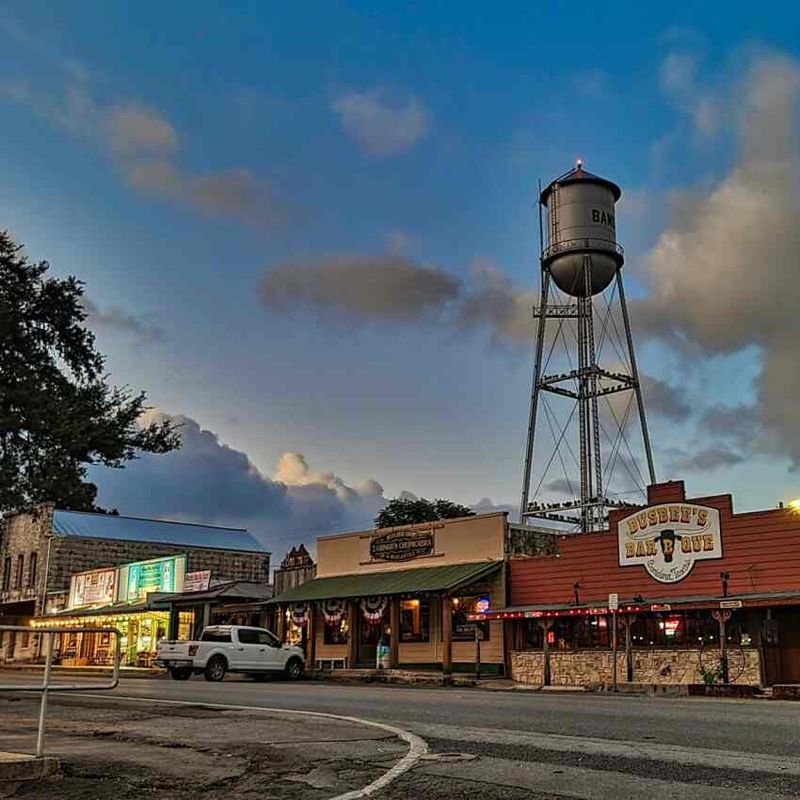
Bandera wears the title Cowboy Capital of the World like a well-loved Stetson hat. Authentic dude ranches surround the town, offering visitors a chance to ride horses, rope cattle, and live out their Western fantasies.
The Frontier Times Museum houses oddities and artifacts from frontier days, including everything from dinosaur bones to two-headed calves preserved in jars. Downtown buildings maintain their Old West character with wooden facades and swinging saloon doors that actually swing.
Saturday nights bring folks to dance halls where country music plays and cowboy boots scuff floors worn smooth by generations of two-stepping locals.
8. Salado
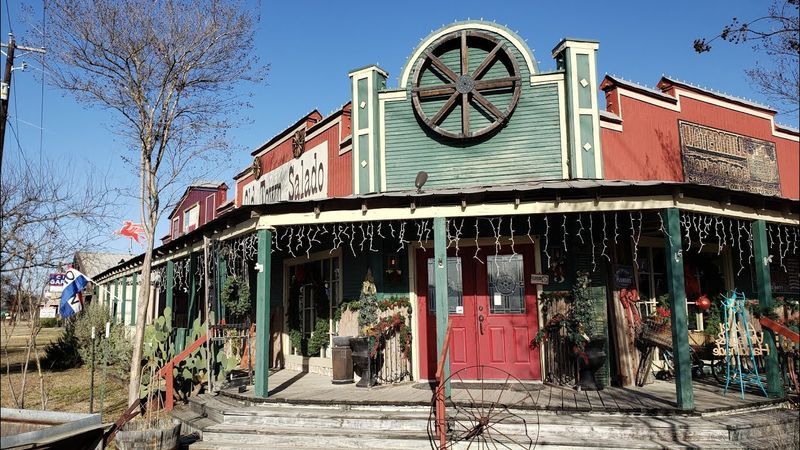
Salado Creek runs through this village like a liquid timeline, having witnessed Comanche camps, pioneer settlements, and modern tourists all seeking the same peaceful waters. The Stagecoach Inn has hosted travelers since 1861, serving meals to guests who once arrived dusty from long journeys.
Artists and craftspeople have claimed many historic buildings, turning them into galleries and workshops where creativity meets preservation. The entire downtown feels like an outdoor museum where you can actually touch, buy, and experience history.
Shaded by ancient oaks, Salado moves at yesterday’s pace, which feels refreshingly slow in today’s rushed world.
9. Fort Davis

Perched in the Davis Mountains at 5,050 feet elevation, Fort Davis offers cool breezes and even cooler history. The actual fort, established in 1854, protected travelers on the dangerous road to El Paso from Apache raids.
Buffalo Soldiers—African American cavalry troops—served here with distinction, and their restored barracks tell stories of courage and frontier life. The town itself clusters around the fort with buildings that match its vintage character perfectly.
Stargazing here is legendary thanks to dark skies and the McDonald Observatory nearby, connecting past and present under the same celestial dome pioneers once navigated by.
10. Round Top
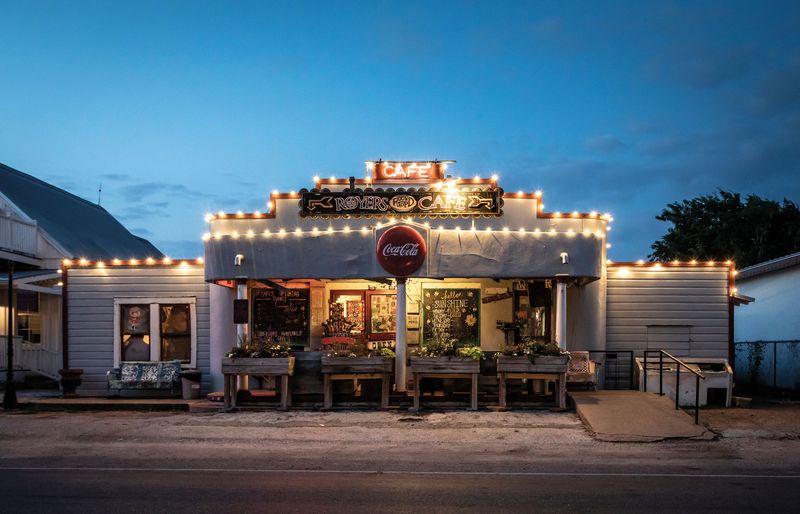
With a population that barely cracks 90 people, Round Top somehow hosts one of the largest antiques fairs in America twice yearly. This tiny town transforms into a treasure hunter’s paradise where folks dig through history looking for perfect vintage finds.
Between fairs, Round Top returns to its sleepy roots with historic buildings, a one-room schoolhouse, and streets so quiet you can hear birds gossiping. German and Czech immigrants settled here in the 1800s, leaving behind architecture and traditions.
The town proves that big things come in small packages, especially when those packages are wrapped in authentic Texas history.
11. Goliad

Remember the Alamo gets all the attention, but Remember Goliad deserves equal respect. The Goliad Massacre of 1836 saw over 340 Texan soldiers executed by Mexican forces, making this ground sacred to Texas independence.
Presidio La Bahia stands as the oldest fort in the West, its thick stone walls having witnessed Spanish, Mexican, and Texan flags flying overhead. The nearby Mission Espiritu Santo adds even more colonial Spanish flavor to this history-soaked town.
Walking Goliad’s quiet streets feels heavy with the weight of sacrifice, courage, and the birth pangs of Texas itself.
12. Fredericksburg
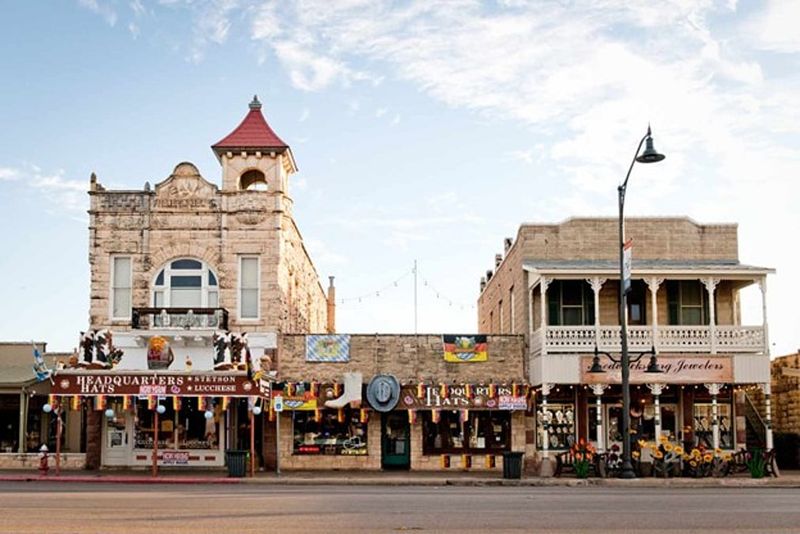
German settlers founded Fredericksburg in 1846, and their influence still flavors everything from architecture to local cuisine. The town’s famous Sunday Houses—tiny homes built so rural families could stay overnight after Saturday shopping—dot the historic district.
Main Street stretches for blocks packed with buildings that have stood since pioneer days, now housing bakeries selling strudel and shops selling lederhosen alongside cowboy boots. The National Museum of the Pacific War honors local hero Admiral Nimitz with exhibits spanning multiple city blocks.
This town manages the impressive feat of being simultaneously deeply Texan and distinctly German, creating a cultural time capsule unlike anywhere else.
13. Marfa

Marfa started as a railroad water stop in the 1880s and almost became a forgotten footnote until artists discovered its stark beauty and cheap real estate. Now it’s where cowboy culture collides with contemporary art in the most unexpected ways.
The Presidio County Courthouse dominates the town square with Second Empire architecture that looks wildly fancy for such a remote location. Historic Hotel Paisano hosted the cast and crew of Giant in 1955, preserving that golden age of Hollywood mystique.
Mysterious lights that appear in the desert outside town add supernatural seasoning to Marfa’s already quirky blend of old West and new weird.
14. Comfort
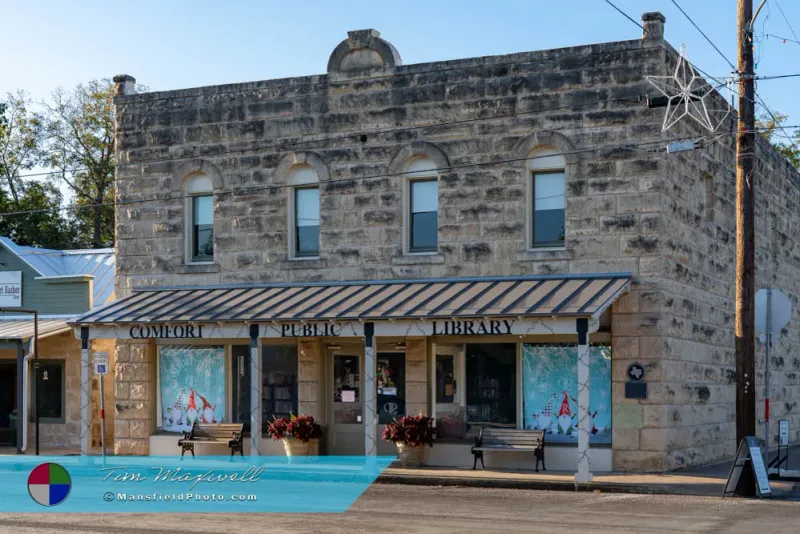
German freethinkers established Comfort in 1854, and their progressive spirit still haunts these limestone streets. The town’s name came from a German word meaning comfort camp, which sounds way better than most pioneer settlement names.
High Street showcases over 100 buildings on the National Register, creating one of the best-preserved 19th-century commercial districts in Texas. Many original families’ descendants still live here, maintaining traditions and stories passed down through generations.
The Treue der Union monument honors German Texans killed for opposing the Confederacy, proving this town’s independent streak runs bone-deep and history-long.
